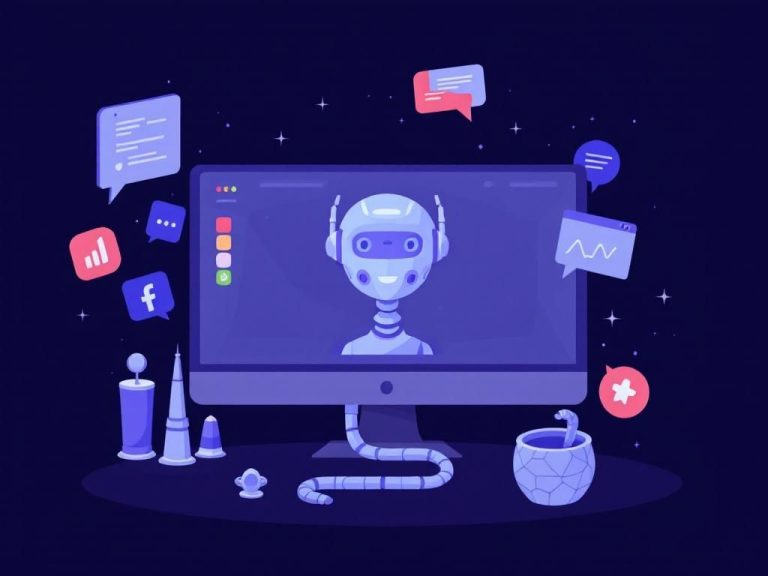In an era where efficiency and productivity are paramount, the ability to streamline workflows can offer a significant competitive advantage. Speech-to-text services have emerged as one of the most transformative technologies, enabling users to convert spoken language into written text quickly and accurately. From professionals in various fields to students and researchers, the applications of these services are vast and impactful. This article delves into the benefits of speech-to-text technology, its applications, and how you can integrate it into your daily workflow.
Understanding Speech-to-Text Technology
Speech-to-text technology, also known as automatic speech recognition (ASR), refers to the ability of a computer program to identify and process human speech into a written format. The technology uses complex algorithms and machine learning to analyze voice patterns and transcribe spoken words into text.
How Does It Work?
The process of converting speech to text involves several steps:
- Audio Input: The spoken words are captured via a microphone or audio recording.
- Sound Wave Analysis: The software analyzes the sound waves, breaking them down into phonetic units.
- Language Processing: The program uses natural language processing (NLP) techniques to understand context and convert phonetic units into words.
- Text Output: Finally, the transcribed text is generated, often with the option for real-time editing.
Benefits of Using Speech-to-Text Services
Integrating speech-to-text technology into your workflow offers numerous advantages:
- Increased Productivity: Typing can be time-consuming; speaking is generally faster, allowing you to get your thoughts down more quickly.
- Improved Accessibility: For individuals with disabilities or those who find typing difficult, this technology provides an essential means of communication.
- Enhanced Focus: By eliminating the need to type, users can concentrate on the content they are creating rather than the mechanics of writing.
- Versatility: Speech-to-text services can be used in various applications, from note-taking and transcription to creating documents and emails.
Applications Across Different Sectors
Speech-to-text technology has found applications across diverse sectors. Here are some notable examples:
| Sector | Application |
|---|---|
| Healthcare | Physicians use speech recognition for patient notes and electronic health records (EHR) documentation. |
| Education | Students leverage the technology for lecture notes, transcription of discussions, and writing assignments. |
| Business | Professionals utilize it for meeting notes, creating presentations, and drafting emails. |
| Media | Journalists and content creators employ speech recognition for transcribing interviews and creating captions for videos. |
| Legal | Lawyers use speech-to-text for dictation of legal documents and case notes. |
Choosing the Right Speech-to-Text Service
With numerous options available in the market, selecting the appropriate speech-to-text service can be daunting. Consider the following factors:
1. Accuracy
Look for services that offer high accuracy rates, ideally above 90%. This will save you time on editing and corrections.
2. Language Support
If you work in a multilingual environment, ensure the service supports the languages you need.
3. Integration
Choose a service that easily integrates with your existing tools and software, such as word processors or note-taking apps.
4. User Interface
The ease of use is crucial. A clean, intuitive interface will enhance your experience and productivity.
5. Cost
Determine your budget and evaluate the pricing structure of the service. Some offer pay-as-you-go models, while others have subscription-based pricing.
Popular Speech-to-Text Services
Here are some of the leading speech-to-text services you might consider:
- Google Cloud Speech-to-Text: A powerful service that supports multiple languages and offers real-time transcription capabilities.
- IBM Watson Speech to Text: Known for its strong AI-driven models, it offers excellent customization options.
- Microsoft Azure Speech Service: Integrates seamlessly with Microsoft products, making it a good choice for businesses already using those tools.
- Otter.ai: Popular for its user-friendly interface, it is particularly favored in the business and educational sectors.
- Rev.com: Offers both automated and human transcription services for high accuracy.
Best Practices for Using Speech-to-Text Technology
To maximize the benefits of speech-to-text services, adhere to these best practices:
- Speak Clearly: Enunciate your words and maintain a steady pace to improve accuracy.
- Minimize Background Noise: Choose a quiet environment for optimal transcription quality.
- Use a Good Microphone: Invest in a high-quality microphone to enhance voice clarity.
- Review and Edit: Always proofread the transcribed text for errors or misinterpretations.
Conclusion
Speech-to-text technology is revolutionizing the way we communicate and process information. By integrating these services into your workflow, you can enhance your productivity, accessibility, and overall efficiency. As this technology continues to evolve, we can expect even more advanced features and applications that will further optimize our work processes. Embrace this change and consider how you can implement speech-to-text services in your daily routine.
FAQ
What are speech-to-text services?
Speech-to-text services convert spoken language into written text, making it easier to transcribe conversations, meetings, or any spoken content.
How can speech-to-text services improve my workflow?
By automating the transcription process, speech-to-text services save time, enhance productivity, and reduce manual typing errors, allowing you to focus on more important tasks.
Are speech-to-text services accurate?
Many modern speech-to-text services boast high accuracy rates, often over 90%, especially when trained on specific vocabulary or dialects relevant to your industry.
What industries benefit the most from speech-to-text technology?
Industries such as legal, healthcare, education, and customer service greatly benefit from speech-to-text technology for documentation, note-taking, and customer interactions.
Can I use speech-to-text services on my mobile device?
Yes, many speech-to-text services are available as mobile apps, allowing you to transcribe speech on the go.
What features should I look for in a speech-to-text service?
Look for features like real-time transcription, multiple language support, speaker identification, and integration with other productivity tools to enhance your experience.


